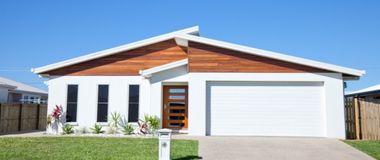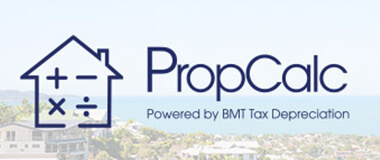Fit out depreciation: A tax win for commercial property investors

First published 14 May 2025
A well-executed fit out transforms spaces and increases a property’s capital value - be it a sleek office refurbishment, a sustainable upgrade or a high-spec hospitality venue. Whether you're a landlord or tenant, claiming commercial fit out depreciation can unlock valuable tax deductions and boost cash flow.
In this article, we’ll explore fit out depreciation benefits.
What is fit out depreciation?
Depreciation refers to the natural wear and tear that occurs to a building and the assets within it over time. Legislation allows the owners of any income-producing property to claim this wear and tear as a tax deduction.
Fit out depreciation specifically refers to the tax deductions available for the wear and tear of assets and improvements installed during the build or customisation of a commercial space. This includes everything from flooring and lighting to furniture, air conditioning and signage.
Under Australian tax law, these deductions fall under two categories:
- Division 40 (Plant and Equipment): Covers removable assets such as carpets, lighting, air conditioning, signage, and furniture.
- Division 43 (Capital Works): Applies to structural improvements like internal walls, flooring, plumbing, and electrical wiring.
Once a lease begins, commercial tenants can claim depreciation on any fit out they add to the property. At the same time, property owners may be eligible to claim deductions for existing plant and equipment already within the premises.
These deductions can be claimed over time based on the effective life of the asset, as set by the Australian Taxation Office (ATO). However, some assets qualify for accelerated depreciation methods, such as the instant asset write-off or inclusion in a low-value pool, allowing businesses to maximise deductions sooner.
Low value pooling is a method of depreciating plant and equipment assets at a potentially higher rate to maximise deductions. The following categories of assets can be allocated into a low-value pool to increase the owner's cash return:
- A low-cost asset is a depreciable asset that has an opening value of less than $1,000 in the year of acquisition.
- Low-value assets are assets that have been depreciated and now have a written-down value of less than $1,000 (even if they originally cost more).
- Under the instant asset write off, an eligible business with an annual turnover of less than $10 million can instantly deduct the full cost of eligible assets priced under $20,000, provided the asset is first used or installed ready for use by 30 June 2025. As of 1 July 2025 the eligible asset threshold will revert to assets priced under $1,000.
These rules apply across a wide range of industries and building types, including hospitality, manufacturing, healthcare and logistics, making it essential for both landlords and tenants to understand their entitlements.
Who can claim fit out depreciation?
Both commercial property owners and tenants may be eligible to claim fit out depreciation, depending on who funded the works and who legally owns the asset.
Tenants can generally claim depreciation on the assets they install as part of their leasehold improvements. Meanwhile, landlords can claim depreciation on the primary structure and any fit out elements they include as part of the lease agreement.
This dual opportunity makes it crucial for both parties to clearly identify who owns each asset, to ensure no entitlements are missed and tax benefits are maximised.
For some commercial properties, depreciation deductions can amount to hundreds of thousands of dollars. When claimed correctly, these deductions have the power to turn a negative cash flow position into a positive one.
Examples of lucrative commercial fit out depreciation
1. Office fit out depreciation
Office fit outs often include a wide variety of depreciable assets, such as workstations, partitions, lighting and integrated technology systems. For tenants, items like desks, chairs and IT equipment are considered Division 40 assets and can be depreciated over their effective lives.
Commercial property owners or landlords may also claim deductions under Division 43 for structural improvements such as installed partitions and fixed flooring. By engaging a specialist quantity surveyor, landlords and tenants can ensure that every eligible asset is identified, assigned and appropriately classified, allowing them to maximise the tax benefits available.
2. Retail fit out depreciation
In the retail sector, fit outs are crucial for brand representation and customer experience, and often involve significant investments in signage, shelving, counters, and lighting. Commercial tenants can claim depreciation on any fit out they add to the property from the beginning of their lease. These assets are often removable and have varying effective lives, which enables a tailored depreciation schedule.
If a tenant removes or replaces existing assets, they may also be able to claim the remaining unclaimed depreciation deductions through scrapping, an additional benefit that can further improve cash flow. Property owners also benefit by claiming depreciation on any fit out elements they provide as part of the lease.
Retail fit out depreciation applies to assets installed in income-producing retail properties. Common examples include carpet, air-conditioning units, blinds, shelving, security systems, and firefighting equipment. Both owners and tenants are entitled to claim depreciation deductions for these types of assets.
When an owner upgrades their property’s fit out prior to leasing, it not only increases the property’s value but can also lead to more favourable lease negotiations and, in turn, higher rental returns.
3. Hospitality fit out depreciation
Hospitality venues such as restaurants and cafés require highly customised fit outs. These often include commercial kitchens, bar areas, and dining furnishings, many of which experience accelerated wear and tear. These assets can yield substantial depreciation deductions.
Depending on the individual ownership of each asset, landlords and tenants can claim depreciation on assets like ovens, refrigeration units and point-of-sale systems under Division 40 and may also be able to claim Division 43 deductions for structural elements such as ventilation systems, integrated seating and built-in service areas.
Due to the complex and asset-rich nature of hospitality fit outs, it is essential to obtain a detailed depreciation schedule prepared by a qualified quantity surveyor to ensure that every deduction is captured.
Don’t miss out on scrapping deductions
It’s also important for property owners and tenants to be aware of the financial benefits of scrapping pre-existing fit outs, as this can significantly increase the available deductions.
Scrapping refers to the ability to claim an immediate tax deduction for the undepreciated value of assets that are removed and written off during renovations or upgrades. The scrapping value is calculated as:
When a commercial fit out is removed, whether due to a renovation, lease change or brand refresh, the scrapped assets may still carry unclaimed value. Claiming this remaining value can significantly enhance cash flow, particularly in industries such as retail and hospitality, where periodic refits are common.
To ensure that scrapping deductions are captured, it’s important to arrange a pre-renovation depreciation schedule. This documents all existing assets, which is essential for claiming any remaining depreciable value that would otherwise be lost.
Tip!
If you or your tenant are planning a new fit out or lease renewal, contact a depreciation specialist before starting renovations. This will ensure that the depreciation schedule prepared at the time of fit out completion will leave no asset unclaimed.
Why engage a quantity surveyor?
To make the most of fit out depreciation, it’s essential to obtain a professionally prepared tax depreciation schedule. Quantity surveyors are recognised by the ATO as qualified professionals who can estimate the value of depreciable assets, especially when original costs are not available.
A depreciation schedule ensures you:
- Don’t miss out on eligible claims
- Properly categorise assets under Division 40 and Division 43
- Maximise your depreciation deductions each financial year
- Once prepared, a schedule remains valid for the entire life of the building or fit out, providing long-term tax planning value.
The bottom line for commercial property owners and tenants
Whether you own a boutique retail space, a leased-out office suite or a bustling hospitality venue, fit out depreciation can deliver thousands of dollars in tax deductions each year.
If you’re a commercial property owner, understanding what you can claim, helps maximise your return on investment and attract tenants by offering better facilities and more competitive lease terms. If you’re a tenant, claiming depreciation on your fit out can significantly reduce your taxable income and increase cash flow, providing welcome relief in a competitive business environment.
For expert advice on commercial property fit out depreciation contact BMT Tax Depreciation on 1300 728 726 or Request a Quote.
Connect with us
Stay up to date
Subscribe to receive the latest
BMT news and announcements.





